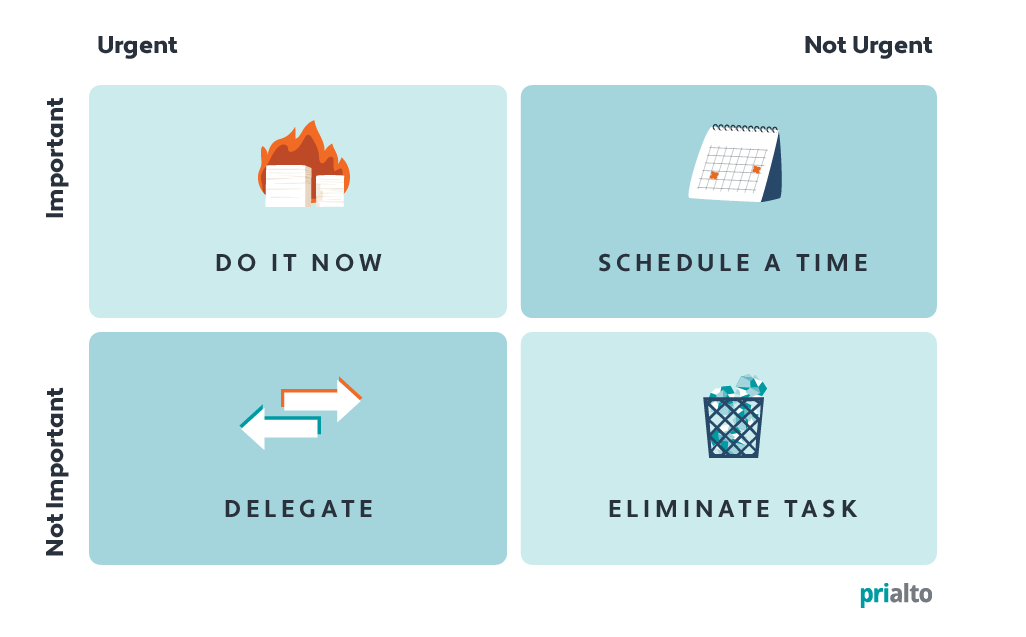Time Management
Effective time management is crucial for personal productivity and career success. It helps you prioritize tasks, meet deadlines, and maintain a healthy work-life balance. This guide covers essential time management techniques, tools, and strategies to help you manage your time effectively.
Time management is the process of planning and controlling how much time to spend on specific activities. Good time management enables you to work smarter—not harder—so you get more done in less time, even when time is tight and pressures are high.
Benefits of Time Management
- Increased productivity: Accomplish more in less time.
- Improved quality of work: Focus on tasks more thoroughly.
- Reduced stress: Avoid last-minute rushes and missed deadlines.
- Better work-life balance: Allocate time for personal life.
Tools & Strategies
Prioritizing
The Eisenhower Matrix, also known as the Urgent-Important Matrix, helps you prioritize tasks based on their urgency and importance.

Urgent and Important: Do It Now Tasks that need immediate attention. Example: Crisis management, project deadlines.
Important but Not Urgent: Schedule a Time Tasks that are important but can be scheduled. Example: Planning, professional development.
Urgent but Not Important: Delegate Tasks that need attention but don't contribute to your long-term goals. Example: Interruptions, some meetings.
Not Urgent and Not Important: Eliminate Tasks that are distractions. Example: Social media, trivial tasks.
Time-Blocking
Time-blocking involves scheduling specific blocks of time for different tasks or activities. This method helps you maintain focus and ensures that you dedicate adequate time to high-priority tasks.
How to Time-Block:
- List your tasks: Identify the tasks you need to complete.
- Assign time blocks: Allocate specific time periods to each task.
- Stick to the schedule: Follow your time blocks strictly to avoid distractions.
Tip
Consider blocking time in your calendar for recurring tasks like time tracking, reading emails, and working on knowledge sharing.
The Pomodoro Technique
The Pomodoro Technique is a time management method that uses a timer to break work into intervals, traditionally 25 minutes in length, separated by short breaks.
Steps:
- Choose a task.
- Set a timer for 25 minutes (one Pomodoro).
- Work on the task until the timer goes off.
- Take a 5-minute break.
- After four Pomodoros, take a longer break (15-30 minutes).
To-Do Lists
A simple yet effective tool, to-do lists help you keep track of tasks that need to be completed. Prioritize the items on your list using the Eisenhower Matrix or ABCDE Method.
Best Practices:
- Daily list: Start each day by listing tasks to accomplish.
- Categorize: Divide your list into high, medium, and low priority.
- Review: At the end of the day, review what was accomplished and plan for the next day.
You may use Google Tasks to manage your to-do lists.
Digital Tools
Several digital tools can help you manage your time more effectively:
- Project management, task management, and to-do list apps like ClickUp, Trello, or Asana.
- Calendar apps for scheduling time blocks and reminders.
- Time-tracking apps that provides insights into how you spend your time.
Avoiding Procrastination
Procrastination is one of the biggest challenges to effective time management. Here are some strategies to combat it:
- Break tasks into smaller steps: Large tasks can be overwhelming. Breaking them down makes them more manageable.
- Set deadlines: Even for tasks without a hard deadline, set a personal due date.
- Use the Two-Minute Rule: If a task takes less than two minutes, do it immediately.
- Eliminate distractions: Identify and remove common distractions (e.g., social media, unnecessary meetings).
Time Management Tips
- Plan your day the night before: Write down your top tasks for the next day.
- Start with your most important task: Begin your day with the most critical task (often referred to as "eating the frog").
- Learn to say no: Protect your time by politely declining tasks that don't align with your priorities.
- Batch similar tasks: Group similar tasks together to stay in the flow (e.g., respond to emails at set times).
Continuous Improvement
Time management is a skill that improves with practice. Regularly review and adjust your methods to find what works best for you.
- Reflect weekly: Take time each week to reflect on what worked and what didn't.
- Seek feedback: Ask colleagues or mentors for feedback on how you manage your time.
- Stay flexible: Be willing to adapt your strategies as your work and life circumstances change.
By mastering time management, you'll be able to accomplish more, stress less, and find greater satisfaction in your work and personal life.
